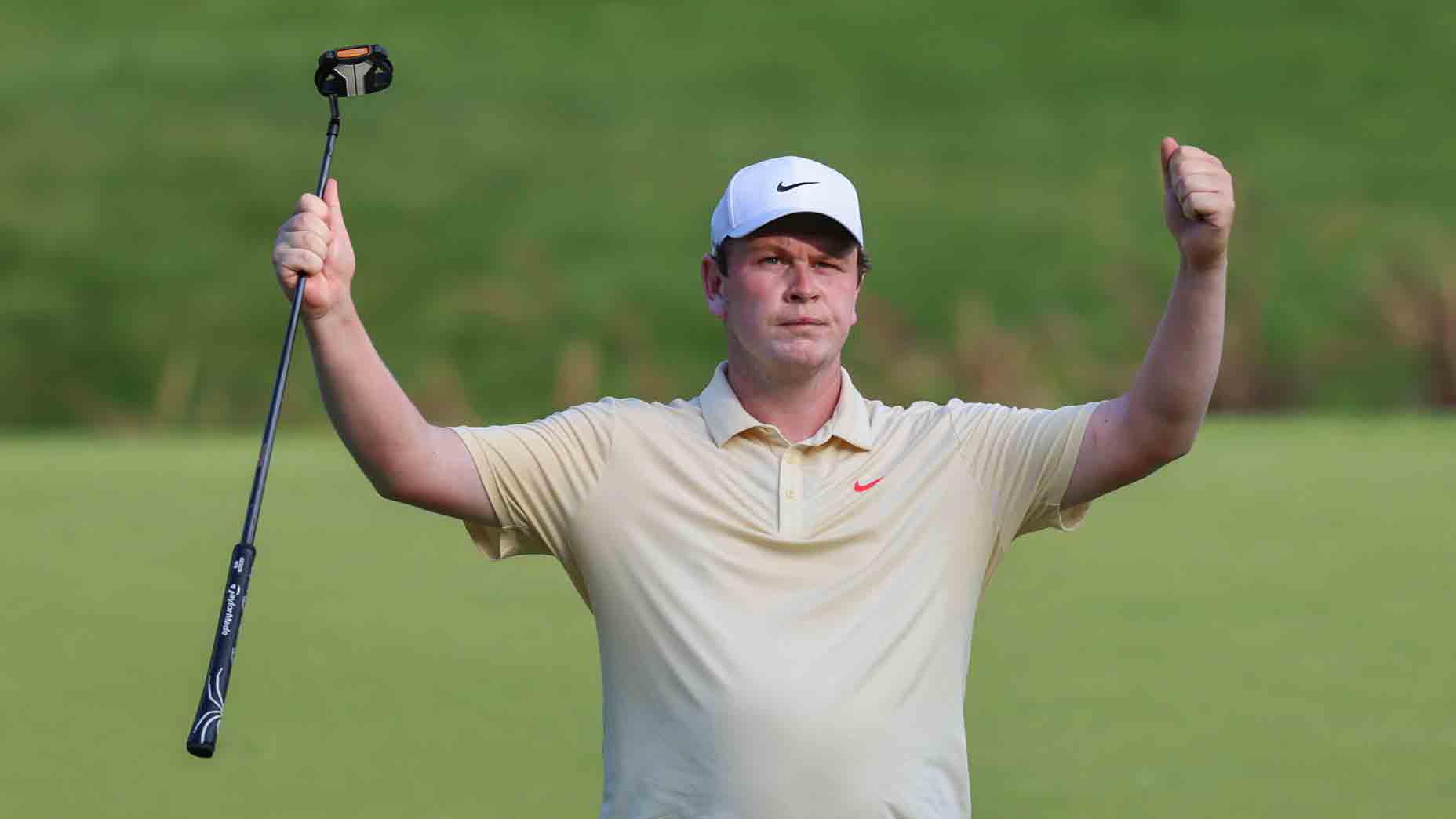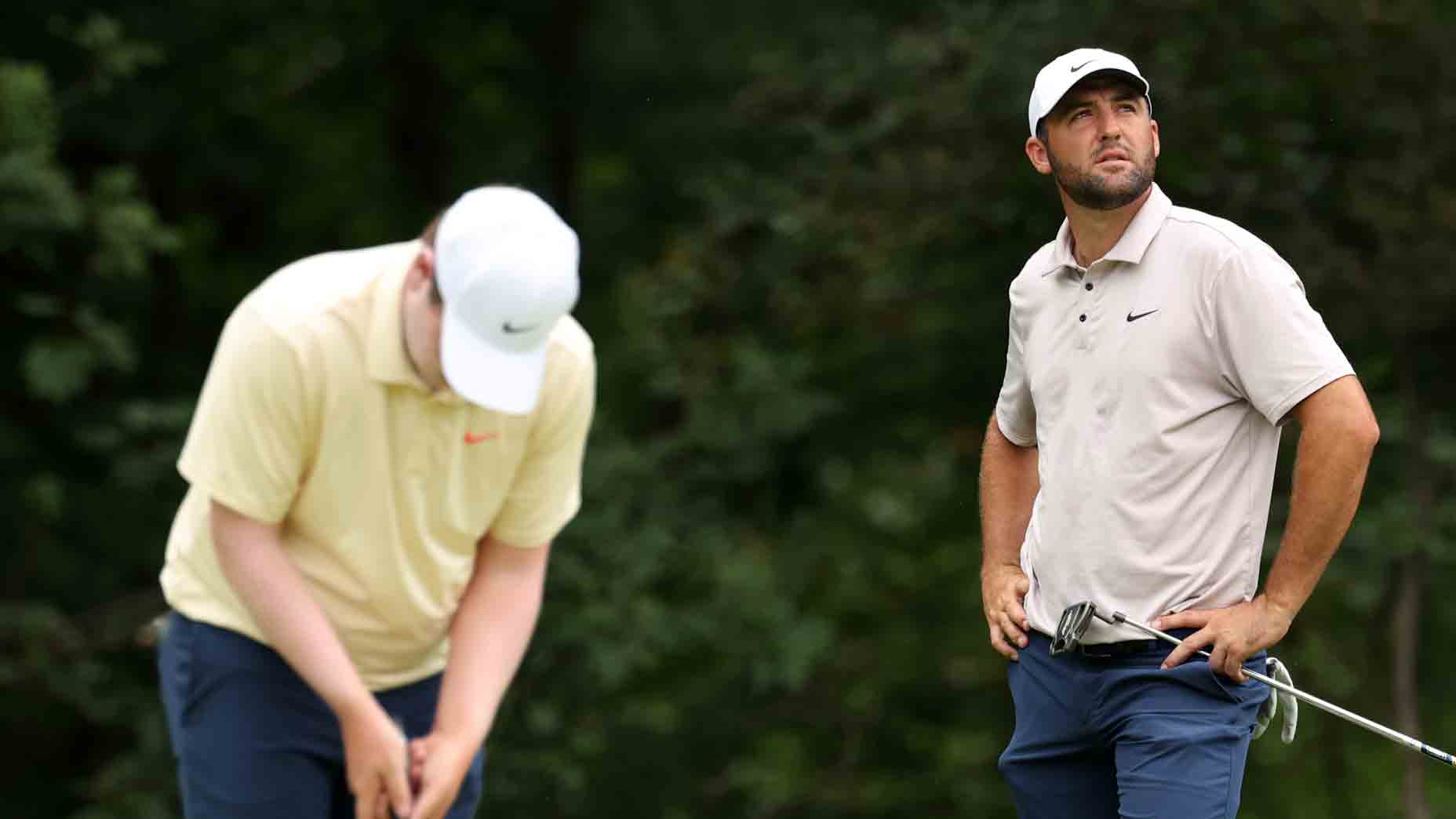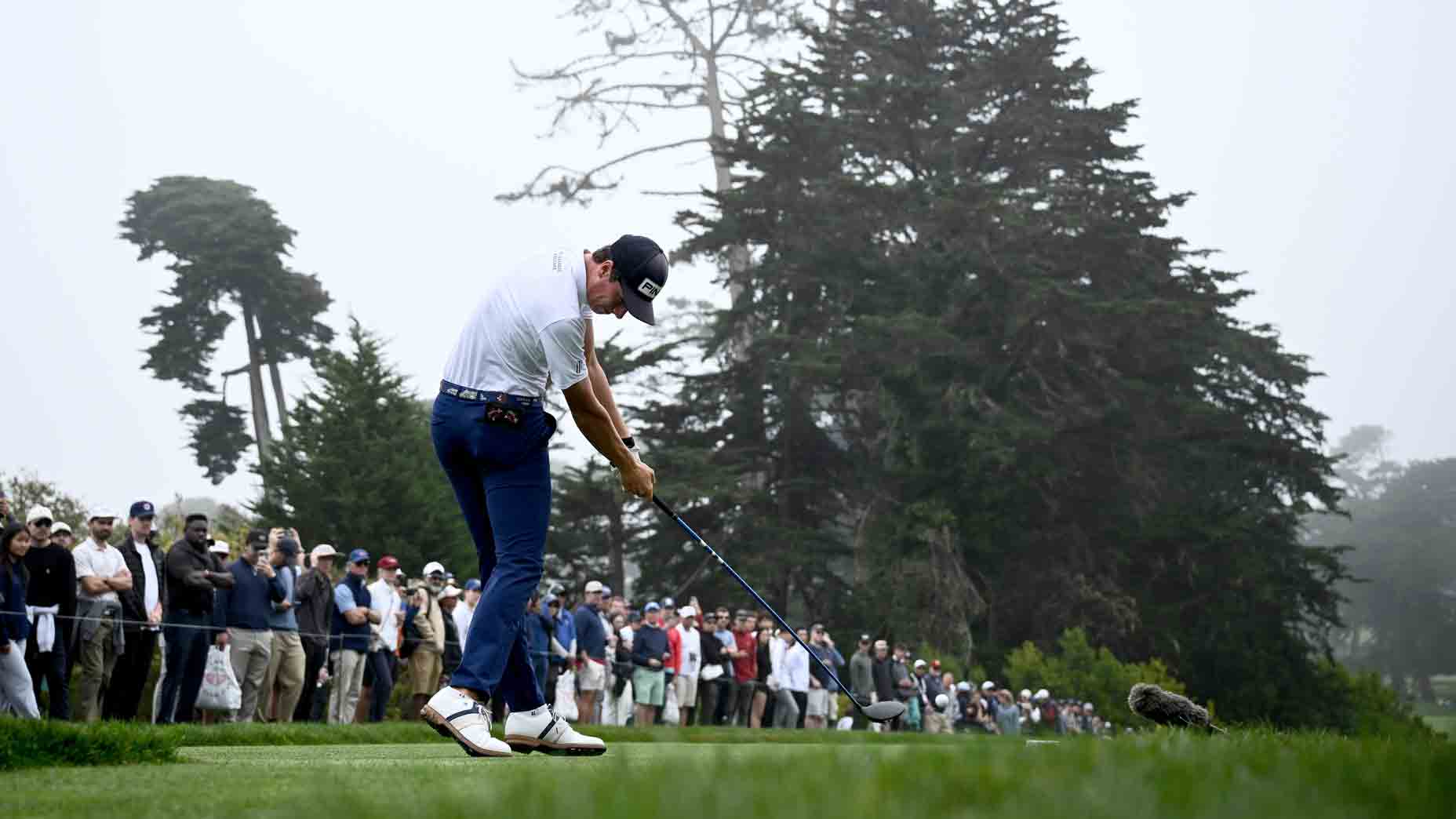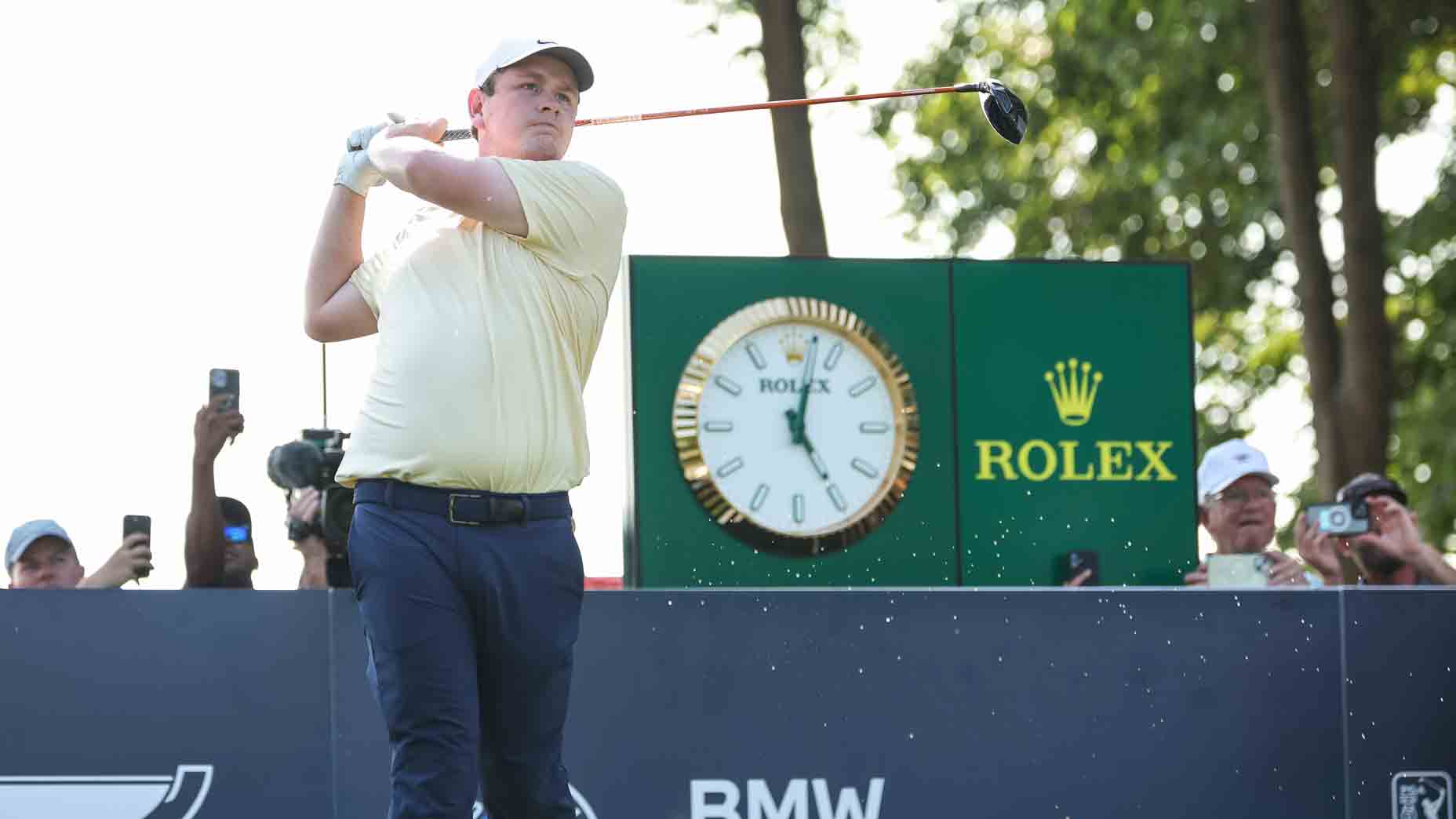PONTE VEDRA BEACH, Fla. — Messing around during Tuesday’s practice round, Tiger Woods and Bryson DeChambeau swapped putters as they practiced on the 6th green. DeChambeau watched the 14-time major champion roll a few putts before stepping in to explain something about his approach. The conversation continued as the two frequent practice-round partners walked to the next tee.
“I just want to be able to get up there and not think about it,” Dechambeau said.
Woods laughed and said, “You do not know how to not think.”
“Well, that’s exactly my problem!” DeChambeau said.
DeChambeau, who sits inside the top 10 after the first two rounds of his Players debut, has attained cult hero status for his calculated approach to the game and his outside-the-box thinking. The ever-curious college physics major is the only notable professional to play golf with single-length irons and employs what he has referred to as a “theoretical swing” that has never existed on the PGA Tour.
Of course, plenty of Tour pros are analytical, Woods and Phil Mickelson among them. The newest generation of Tour pros is ready and able to digest a litany of statistics and analytics, from spin rate and smash factor to green-reading books so precise they’re consulted on putts inside five feet because pros can trust them as much as they trust their own eyes. While pros generally downplay their own statistical reliance — for one thing, it doesn’t always make for particularly interesting conversation — DeChambeau has embraced it.
Success helps, too: The Fresno, Calif., native has notched three top-fives in his last four starts and made the cut for the Ryder Cup powwow/pep rally hosted by Jim Furyk Wednesday evening.
Stephen Harrison, DeChambeau’s putting coach, said that some of the perception of DeChambeau is oversimplified.
“He gets described as this mad scientist, but he’d be crazy not to take advantage of all this information,” Harrison said. “It can give him some assurance, looking at the information we have and at some of the numbers.”
While “mad scientist” may oversimplify his image, watching DeChambeau up close looks, sounds, and feels different. He keeps a running dialogue of out-loud calculations when he’s on the course. When something goes wrong, it’s evident; you can tell the emotional investment in each shot because of the reaction to a shot that doesn’t quite pan out.
During the first round, DeChambeau faced a long second shot into the par-5 11th, 223 yards to the front of the green into a slight breeze. He and his caddie Tim Tucker discussed the wind as it swirled. They settle on a shot: hybrid starting directly at the flag with a slight draw — the calculation being that the wind (a “10:30 wind,” according to DeChambeau) and the draw would cancel out. Instead, the breeze died and the ball drew just left of the flag, leaving him incredulous.
“You’ve got to be kidding me,” he said. “Oh, no, no, I could not have hit that any better.”
He drew a bad lie in the bunker and chopped it into the rough, then hit a poor chip from there that led to a bogey. Despite a brilliant chip-in for eagle on the next hole, the bogey was a far more indelible memory after the round.
“Oh, that approach shot was perfect,” he said. “The wind was into us perfectly, and I striped it, and the wind died down.” It seems DeChambeau and the wind — a shifting, indeterminate variable — do not get along.
“If I don’t double 18 and I birdie the par 5s, that’s five, six shots right there,” he said after posting a two-under 70, lamenting a water ball at the finishing hole. “Then I’m at eight under. My game is there, it’s just gotta go in the right situations, executing the right shots, and I felt like I got a little unlucky today, which hopefully won’t happen again tomorrow.”
Whether it was his luck that switched or a tip from a Thursday-night putting session with Harrison — the duo discovered on DeChambeau’s putting monitor that he was putting hook spin on the ball — things went even better during Friday’s round. DeChambeau gained more than three shots on the field with his putter alone, the best in the entire morning wave, and tallied seven birdies against just two bogeys for a five-under 67.
The style of golf he employs can look exhausting: DeChambeau appears to invest more in every shot than the affectless pros that surround him on Tour. But it’s a style that feels authentic to his personality, even if it may not be suited to everyone.
“It’s funny,” said Harold Varner, who rounded out the practice round threesome with DeChambeau and Woods. “I asked him, ‘What the f— does all this stuff mean?’ And Tiger stopped me, to save me. He was like, ‘No, dude. No.'”
After his stellar second round, DeChambeau was pleased with his play but, as ever, not fully satisfied.
“My wedges are struggling a little bit right now. I’m getting some weird spin rates, so we’re going to go work on that,” he said as he made his way to the practice range for yet more tinkering. “I don’t know what I’m going to do yet, but we’ll figure it out.”






